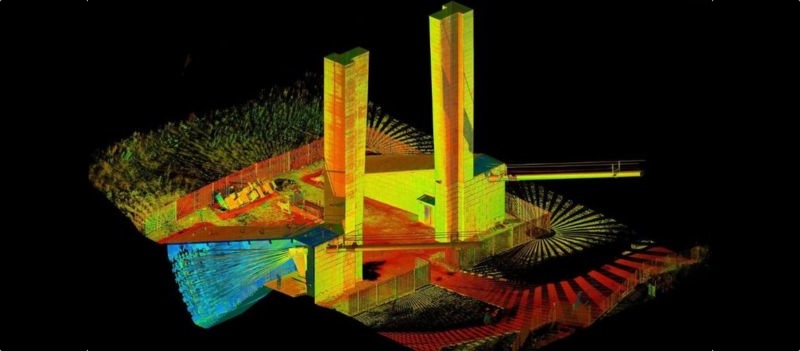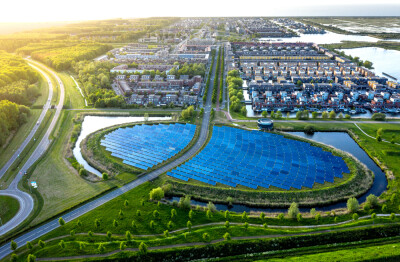After a very busy first quarter, I finally had time to make some much-needed new marketing materials. This had me spending too much of the last month looking for the latest on rendering point clouds for images and animations. I found a lot of articles and postings circa 2012-2014, but not much in the last twelve months. It made curious about a few things: Am I the only one still making animations of point clouds? Am I the only one that doesn’t have this figured out already?! Are we using meshes for visualization instead, due to the sudden ubiquity of UAVs?
Spending 50 hours on rendering over the last 30 days, I’ve had a bit too much time to consider things. I offer the following so that others may not have to spend their time repeating my mistakes—in hopes that they may pay it back by offering some other insights in the comments!
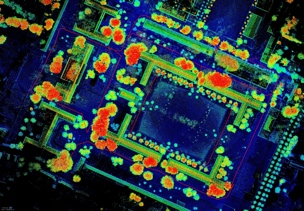
- Autodesk 3DS changes – I can safely say that 90% of my time in 3DS has been spent trying to render point clouds and CAD/Revit models. Its learning curve is legendary, and I only dive in when I have days to devote to it. This time around, I hit an additional hurdle as Mental Ray, the preferred renderer for point cloud data, is no longer available. NVidia quit developing it and Autodesk purchased an alternate rendering engine called “Arnold” that is now considered the de facto renderer for point clouds. Since Arnold is newly acquired, there’s precious little documentation (even less of it related to point clouds) and a grand total of one tutorial on Lynda.com. I was able to get a few pics rendered, but large data sets locked up or crashed 3DS every time. The few stills looked good but I simply don’t have the time to keep going without additional documentation or spending time with someone that has it down. V-ray is still an option but it does require a separate license as a plug-in.
Even if I had the time, I’m not sure it’s a worthy investment. The wholesale changes in the ReCap team at Autodesk, along with the rendering engine changes, and the advancement of UAV collected meshes, have me wondering if I’m chasing a dying solution.
- Stagnant solutions – There are a few standbys that I pulled out to get the job done. Leica Geosystems Cyclone, Autodesk Navisworks, and Cloud Compare all have rendering engines that are very simple to use. However, they are remarkably unchanged from their initial releases years ago. Cyclone still renders frames before giving the cloud time to fully load, and Navisworks offers very little in the way of good looking clouds unless they are RGB colored (texture mapped) from images. Navisworks is the most advanced due to the ability to nest animated objects within an animation but it still lacks some of the basic functionality needed to render good animations. Namely, all of these fail to have an editable timeline to correct less than desirable movements that are often auto-generated between keyframes. This makes for a LOT of trial and error to maintain a constant speed of movement and focal point with one’s camera.
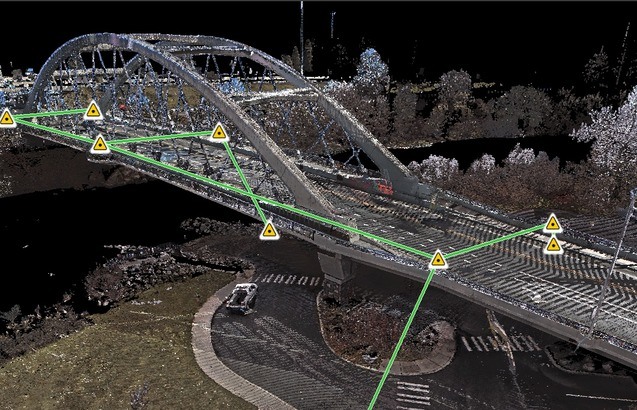
Cyclone 360
- Pointools – You know what did have a fully editable timeline along with some great animation wizard presets? Pointools. I still consider this the gold standard of point cloud animation engines. Its integration into the world of Bentley seems to have killed it as an option for a lot of people. However, it still lives. After a few weeks I punted to Pointools and was able to render point cloud animations of 180-240 seconds in the time it took me to animate a single frame in 3DS.
- Sketchfab as a replacement? – I’ve developed several clients that are more than happy to get a point cloud via ReCap. However, I’ve got several others that do not have any sort of CAD and live in a world of PDFs and web apps. Sketchfab’s concept of being the YouTube for 3D models is proving a reliable replacement for animations when it comes to some of these clients. However, there are a few caveats. First of all, there are limitations to the size of a file that can be uploaded and getting the largest available subscription plan can get expensive – quickly. This size limitation results in users degrading the quality of their point clouds and/or models which, on some level, defeats the purpose when your intent is to show off your work. Secondly, you are no longer in control of the focal point. More than once I’ve watched people spin around happy with the 3D novelty but totally miss the asset or area of concern that drove you to send them the link in the first place.
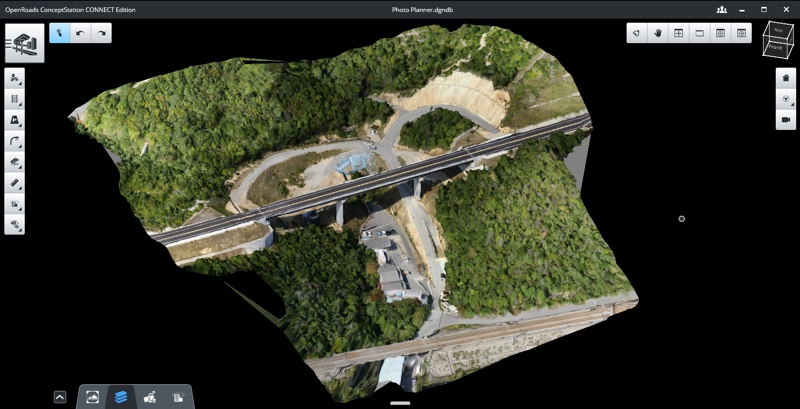
A ContextCapture mesh
- Are meshes taking over? – And now we come to what may be the biggest point, is all of this time wasted shoehorning scanning technology towards a use case that has been surpassed by other technologies? Assuming that we are only showing existing conditions as opposed to design intent, Unmanned Aerial Vehicles (UAVs) have now become an interesting option. When you start adding up the time to export your cloud to an animation suite, create an animation, and compiling in a video authoring suite, your budgeted time can quickly equal what it would cost you to create the same video with a UAV! This is especially true if you operate the UAV in-house. Additionally, the advancements in processing meshes from imagery seem to be outpacing point cloud processing of late and every animation suite can handle OBJ files. Since they are more common, you will also find far more educational resources when trying to learn better ways of rendering with meshes.
I’ve always enjoyed rendering animations to show off my work and to communicate the abilities of reality capture technologies to others. However, the extent to which the available processes of doing so have remained static over the past decade is astounding. I’d argue that nothing else in the reality capture space has remained as unchanged!
So, I bring it to you dear readers. Are you rendering these sorts of animations? If so, what are you using as your tools? If not, what has replaced the point cloud animation in your arsenal?







